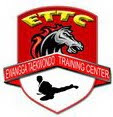Speed Training for the After 40 Martial Artist
The following article is excerpted from the book: Martial Arts After 40 by Sang H. Kim, Ph.D. The above article is copyrighted by the author. All rights reserved. Special thanks to Turtle Press for the use of this article.
“Aren’t you too old for martial arts?”
Have you heard this question lately? Or perhaps even looked in the mirror and asked yourself the same thing? Well the answer is a resounding “No.” Martial arts can be practiced as long as, if not longer, than just about any other physical pursuit.
In fact, martial artists often get better, not worse, with age. Perhaps you are not as fast or flexible as the younger students in class. Perhaps you don’t recover as quickly from your workouts or you are bothered by new aches and pains that you easily shook off when you were younger. These are minor obstacles when you consider the benefits that come with age. The wisdom to slow down, to see the lessons in every class, to mentor younger students, to laugh at the macho posturing and go your own way, to discover yourself from the inside out. That is what martial arts after 40 is about; a journey of self, a discovery of the boundlessness of your mind and body, working as one, expressing your inner joy and wisdom.
Aging is an inevitable process. It proceeds at different rates in different people. You can’t stop it, but you can delay it. It is your responsibility to live your life to the fullest--or not. As your life unfolds, you begin to realize that every choice that you have made so far has brought definite consequences that are either rewarding or painful. Reaching mid-life means an accumulation of wisdom. Based upon the lessons of your past choices, you now have a great opportunity to reconsider and possibly change the course of your life. In fact, now is the perfect time to begin living your life to the fullest.
The very fact that you are a martial artist or are considering taking up the martial arts means you want to take care of yourself, that you want to challenge your mind and body. This choice is a tremendous gift to yourself. It means that you can reach the point of being where your body and mind coexist in perfect harmony.
In your martial arts training, you will at some point realize that your body is unique in itself. Your body has a different set-point from others. You have to learn to adjust your condition to the ideal point for the uniqueness of your body. You can ignore statistics and standard guidelines, but you cannot take your natural guidelines for granted.
This book is not intended to mold you to be like someone you see on the cover of a fitness magazine. Instead, it will help you realistically get into and stay in the physical condition that will allow you to continue to enjoy your martial arts practice for many years to come.
Speed Training Tips
There are some rules to keep in mind when developing speed in your skills:
1. The skill must be conducive to speed training. Most martial arts skills can be done at full speed, either in the air, with a partner or against a target. Gross motor skills are more easily adapted for speed training than precision skills.
2. The skill must be physically sound. Do not try to build speed until you have mastered the basic physical model of a skill. If you have to think about the mechanics of performing a skill or you are performing it without the correct biomechanical form, your potential for speed development is limited.
3. Relax. Speed training requires relaxation from the point of initiation up to the point of impact. At the point of impact, the muscles should briefly tense and then relax again to facilitate quick recovery.
4. Recover. Recovery between executions is essential for improving speed. If you are training a single skill, like front kick, the recovery between kicks can be brief, up to fifteen seconds. If you are working on combinations, spend a bit more time between repetitions so you do not become fatigued too early.
5. Practice first, practice last. There are two theories on where in your workout speed training should come. Many experts advise putting speed training early in the workout so you are not fatigued and your muscles are fresh. This is good advice if you are relatively flexible, have good muscular endurance and can relax easily. There are two drawbacks to doing speed training early in a workout: you can become too fatigued to perform well later in the workout and you may be too tense to fully achieve your potential. Practicing speed skills near the end of a workout means your muscles are looser and therefore you may find it easier to relax although you may sacrifice some freshness. Arrange your speed training to suit your performance style.
6. Use low repetitions. Keep the number of repetitions of each skill low (less than 10) but the quality of each repetition very high. Perform each rep with complete concentration and fully rest between repetitions.
7. Feel the speed. As you perform each repetition, you may find that a particularly fast repetition “feels” different from all the others. Try to capture and recreate this feeling, whether it is a feeling of lightness, relaxation, energy, intensity or whatever name you assign to it.
8. Take time off. As you practice for speed, you may find that you have hit a speed bump, a pace which you can consistently imitate, but cannot break through. When this happens, it’s time to take a few days to a week off from speed training. Instead of practicing the technique, spend time each day visualizing breaking through the speed bump.






0 komentar:
Posting Komentar